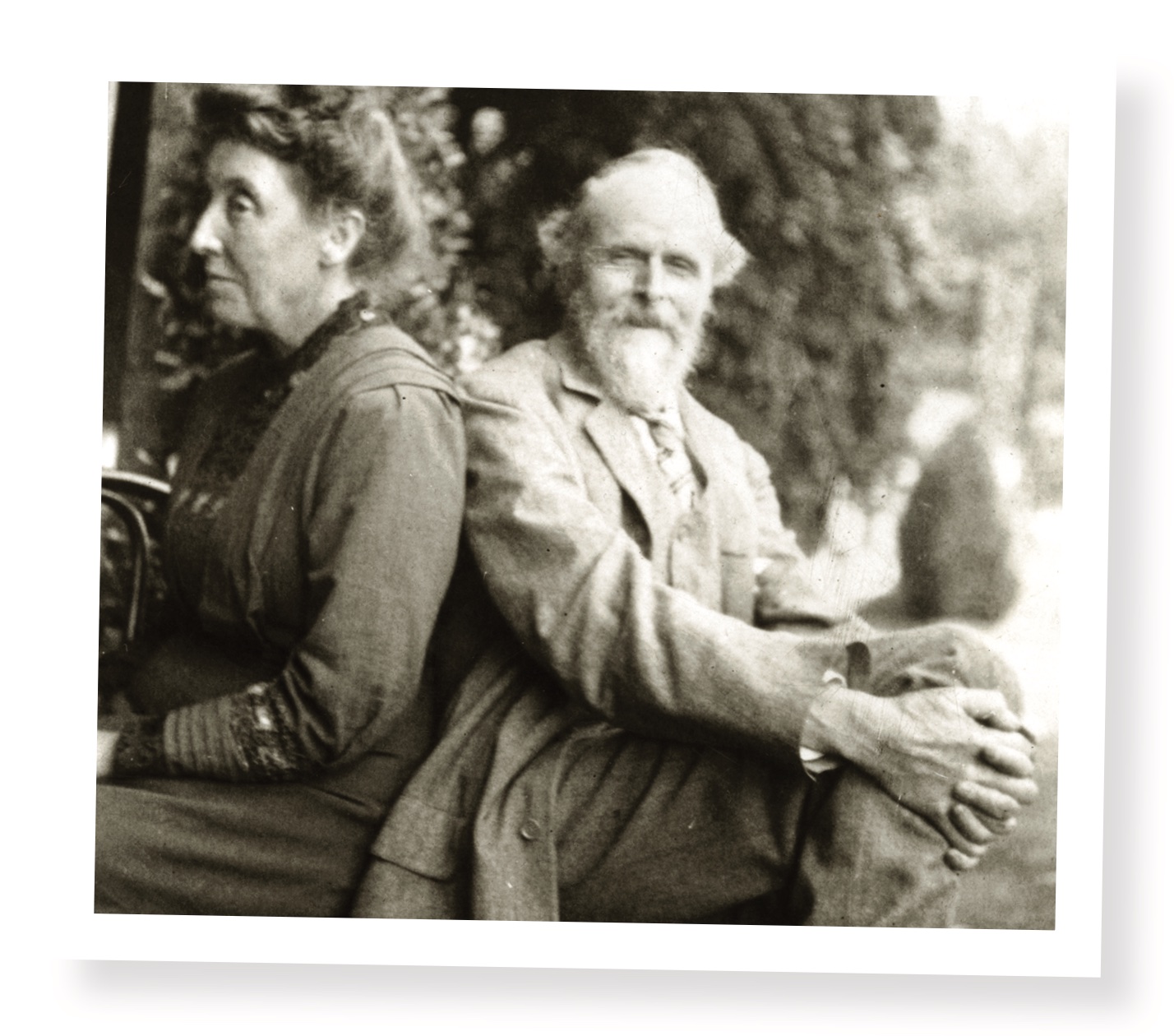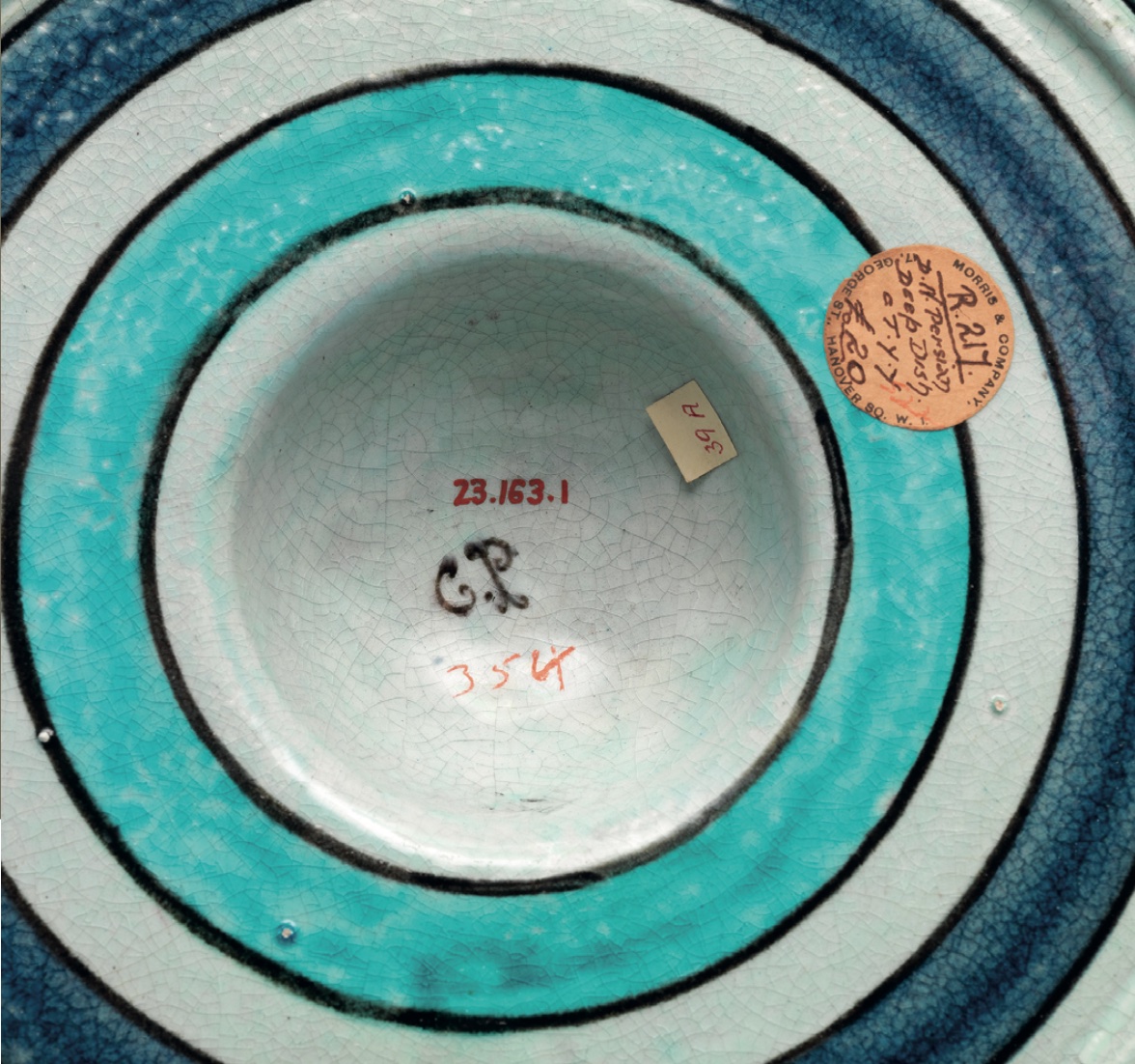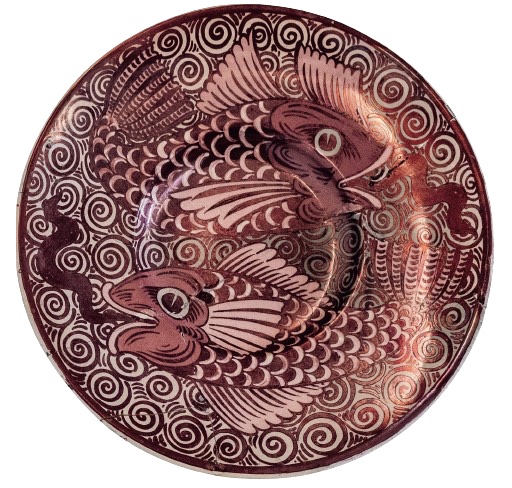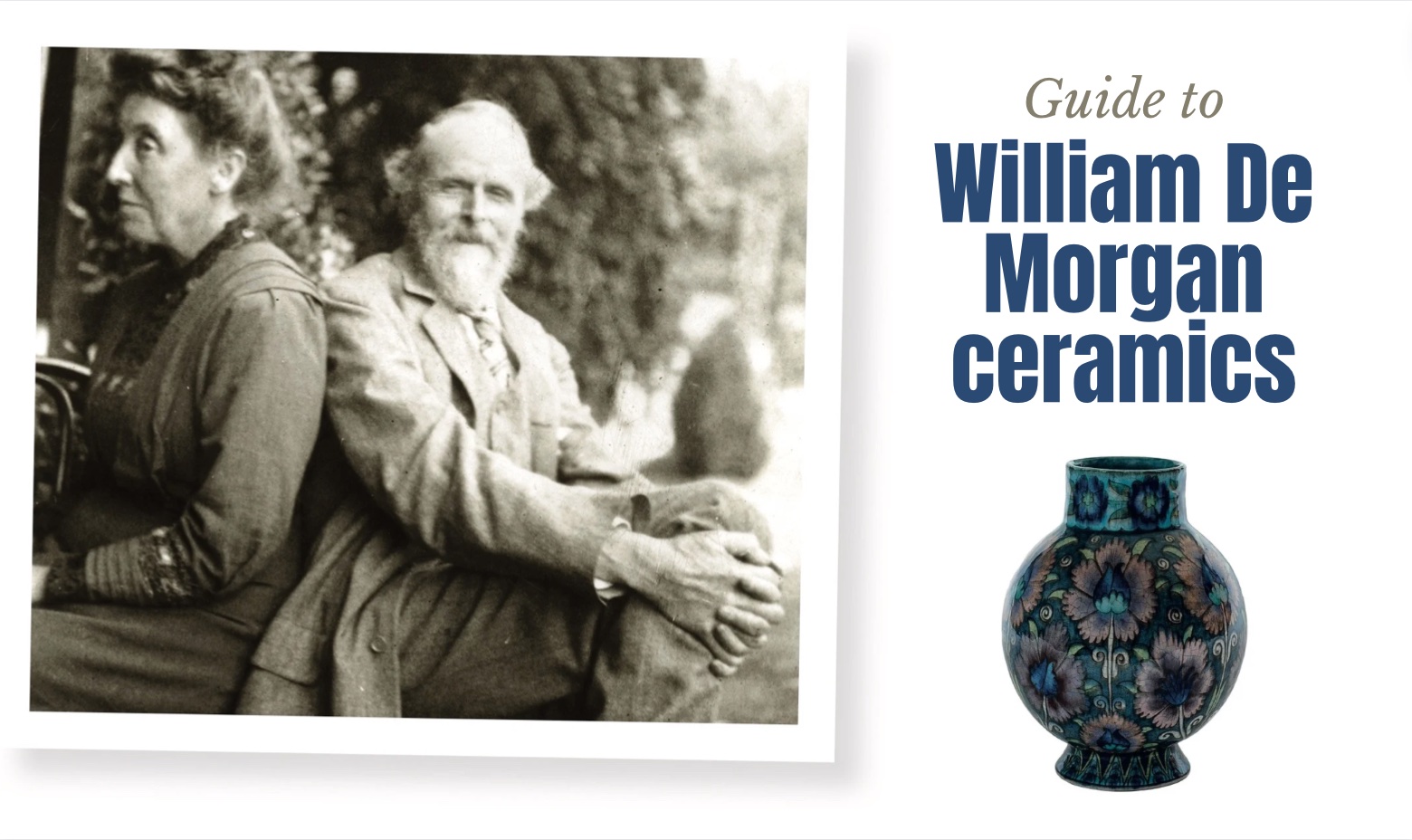#William #Morgan #ultimate #guide #Antique #Collecting
Marriage to Evelyn
Unfortunately, De Morgan suffered from ill health and by the mid 1880s found it increasingly tiring to commute to Surrey. In 1888, he opened a studio closer to home in Sands End, Fulham.

The pottery was beset by financial problems, despite repeated cash injections from his wife, the pre-Raphaelite painter Evelyn De Morgan (née Pickering) whom he married in 1887. Here he was joined by a new partner the architect Halsey Ricardo, with whom he worked on several large projects including Peacock House as well as important commissions for a series of tile patterns for P&O Line.
The Fulham period is considered De Morgan’s best and is certainly the most prolific. He mastered many
of the technical aspects of his work that had previously been elusive, including complex lustres and deep, intense underglaze painting that did not run during firing.
One of the best-known portraits of De Morgan painted by his wife Evelyn, shows him holding a stunning lustre vase widely acknowledged to be his crowning triumph. In 1919 the vase was bequeathed by Evelyn to the V&A.
Pots to books
However the period was also marred with increasing problems. De Morgan’s health continued to decline
and, to relieve his symptoms, he opted to spend the winter months in Florence. This naturally put increasing pressure on Ricardo even though De Morgan did his best to supervise output and provide ready-to-use patterns from Italy.
It was an inefficient system and the business began to suffer, Ricardo left and De Morgan entered into a partnership with the Passenger brothers and his kiln master Frank Iles. This was to last until 1907 when De Morgan withdrew from the business.
Late in life he turned his hand to writing novels, and became better known for these than he ever had been for his pottery. His first novel, Joseph Vance, was published in 1906, and was an instant sensation in both the UK and US. This was followed by An Affair of Dishonour, Alice-for- Short and It Never Can Happen Again. He died in 1917 and was buried in Brookwood Cemetery.
William De Morgan marks

Although far from all De Morgan’s pottery is marked, there is a range of markings that can help to date it. Some pieces, although not bearing a De Morgan mark, have the initials of one of the Passenger brothers, this normally indicates a well painted piece, thus serving as a quality control measure. Other initials include J.J. for Joe Juster, H.R. for Halsey Ricardo and E.P. for Edward Porter.
As with all hand-crafted items there are varying degrees of quality in De Morgan’s pottery. Due to the sensitivity of the glaze components
and the unreliability of the firing process some pieces look crisp and well defined whereas on others the glaze may have run or misfired.
The lustre pieces are the most sensitive to firing temperatures and pieces can come out too dark or lacking in definition.
Technical know-how
Several techniques were used to apply designs to tiles and vessels, the three main being pouncing, the painted paper technique and painting straight onto the ware. Pouncing was a fairly lengthy process. The finished design was copied onto tracing paper, after which the outline was pierced with tiny pin pricks. The paper was then placed on slip-coated ware and dusted with a fine powder. The powder penetrated the tiny holes and, when the paper was lifted, the pattern was left on the ware, ready to be filled with coloured pigments.

The painted paper technique was more economical and tended to be used for tiles which needed to be produced in large numbers. Again the design was copied onto tracing paper, this time in thick ink outlines.
The copied design was fixed to a sheet of glass which then served as the master copy. On the other side of the glass another sheet of paper was fixed and, by lighting the glass behind, the master copy would shine through and provide the outline within which the painter could then apply the colour pigments.
This painted sheet was then placed face down on the skip-coated ware and fixed with sodium silicate after which it was sprinkled with powdered glaze. It was then fired during which the paper burnt away and the pigments fused with the glaze, thus transferring the pattern to the ware.
The drawback of the printed paper technique was that it could only be used on flat surfaces. On vases and bowls the designs had to be transferred either by pouncing or painting directly onto the ware, with the latter supervised by De Morgan.
Featuring some 60 tiles and vases from the De Morgan Collection and pieces from the Lakeland Arts collection, Sublime Symmetry: William De Morgan is on at Blackwell, the Arts & Crafts House, Bowness-on- Windermere, Cumbria, LA23 3JT until October 6. For more details go to www.blackwell.org.uk




